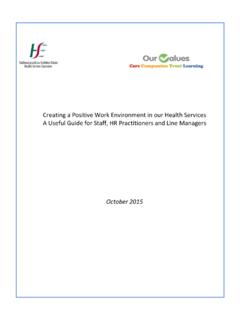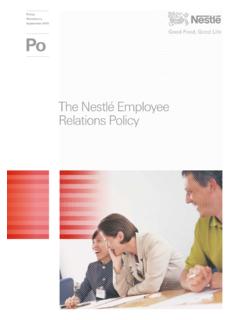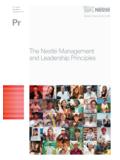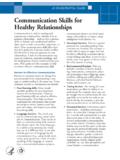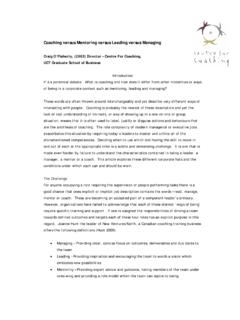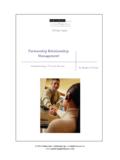Transcription of CREATING RESILIENT YOUTH: A Curriculum …
1 CREATING RESILIENTYOUTH:A Curriculum FrameworkFor middle SchoolStudents and BeyondAdapted from The Resiliency Training Manual andResilient youth : A Curriculum Guideby Dr. Glenn E. Richardson, , CHESA dapted for Australasia byJulie Boydwith contributions from Lou MaroulisCREATING RESILIENT YOUTHA Curriculum framework forMiddle school and BeyondTeachers ManualFirst Published 1998 Global Learning CommunitiesPo Box 66, Hastings Point, NSW 2489 Tasmania 7250 AustraliaAustralian Phone: 03-667664217 Australian Fax: 02-66764217 Email: ~globallearning/ISBN: 1 876153 26 XPublished simultaneously in Australia,New Zealand and the United States of AmericaAll rights reserved. No part of this publication may be reproduced in any formincluding electronic transmission, copying, photocopying or any other means,without prior written permission from the PAGEMODULE 1:MODULE 2:MODULE 3: MODULE 4:MODULE 5:MODULE 6: MODULE 7:MODULE 8:MODULE 9 MODULE 10:RESILIENCYBIBLIOGRAPHYINTRODUCING RESILIENCETHE CONCEPT AND PROCESS OF RESILIENCYDEVELOPING RESILIENCY SKILLSW orkshop1: Identifying Personal StrengthsWorkshop 2: Assertiveness and AngerWorkshop 3: Dealing With BullyingWorkshop 4: Conflict ResolutionWorkshop 5: Problem SolvingPERSONAL WELLBEINGW orkshop 1: The Scientific RevolutionWorkshop 2: Eastern and Western PhilosophyWorkshop 3: Indigenous PhilosophyWorkshop 4: Chinese MedicineWorkshop 5: Self Help ResourcesWorkshop 6: Physiological WellbeingWorkshop 7.
2 Quantum PhysicsHOW OUR INTERNAL WORLD INFLUENCES USHuman BehaviourDifferences between self esteem, self worth, self confidenceYou are what you eatDEVELOPING UNCONDITIONAL REGARDHOW THE EXTERNAL WORLD INFLUENCES USHOW WE CAN INFLUENCE THE EXTERNAL WORLDCREATING RESILIENT RELATIONSHIPSW orkshop 1: Building TrustWorkshop 2: Cultural IntegrityWorkshop 3: Levels of CommunicationCREATING YOUR PREFERRED FUTUREW orkshop 1: The Power of Personal DreamsWorkshop 2: CREATING Your GoalsWorkshop 3: Making a Contribution Beyond MyselfWorkshop 4: The FamilyWorkshop 5: The SchoolWorkshop 6: The CommunityWorkshop 7: Learn-Live-Teach-ExperienceWorkshop 8: Achieving Self MasteryWorkshop 9: Taking Control of your LifeWorkshop 10: Seize the Day: Moving ParadigmsWorkshop 11:Final Celebration41016182123262830313435373738 4041485558616263646869727475777878798081 8485 MODULE 1:INTRODUCINGRESILIENCYNOTE: This program is designed to be run as outlined in this series of modules, or may beadapted according to the needs of your students.
3 It is not designed as a prescriptive would recommend that you plan to spend a minimum of one 2 hour session on each the activities which will be most appropriate for your students. Take note of wheresuggestions are made to include other teachers (remember these are minimal suggestions).Welcome to: CREATING RESILIENT YOUTH: A Curriculum framework For middle SchoolStudents and BeyondThe concept of Resiliency is one which is welcomed by parents, educators, students, youthworkers and communities. By focusing on 'at-riskness' in young people, and by labelling certainyoung people as 'at risk' over the past decade, we have, unfortunately increased the probability ofthem taking on the label. Resiliency has connotations of 'bouncing back', to be able tosuccessfully adapt in the face of adversity, of feeling good about yourself to the degree that youare able to say NO to negativity and temptation and create the life and identity you want, ratherthan accepting the life you are born to, and to be able to develop social competence despitebeing exposed to severe is time for a focus on 'at promise' possibilities, where each adult takes responsibility forassisting our young people to discover and create for themselves a PREFERRED future asopposed to a possible, or indeed probable do this we need to be able to create ENVIRONMENTS for young people where they feel need psychological environments where they are able to meet their needs for love,autonomy.
4 Fun and choice in a way which enables them to make a positive contribution to theirown future as well as that of others. They need physical environments where they feelphysically safe and where their basic needs are provided for without CREATING material need social environments in which they can learn the social skills necessary to live andwork as part of a changing society, which will equip them with the skills and confidence to createthe society in which they want to live, and which will directly influence their academic adults, we need to be conscious of learnings from Resiliency research which was pioneeredover 30 years ago by Emmy Werner and has been ably continued by numerous people includingNorman Gametzy, Bonnie Benard, Tim Burns, Glenn Richardson and many others. Thisresearch indicates clearly that the protective factors we need to build in as a complete package tothe life of every child includes.
5 HIGH YET REALISTIC EXPECTATIONS throughmutual respectpositive attributionchallenge with supportfirm guidancecreation of appropriate ritualsreframingteaching and practice of resilience skillsCARING AND SUPPORT BEYOND THE IMMEDIATE FAMILY throughcompassionlistening/giving voicebelievingbasic trust and safetypatienceunconditional loveOPPORTUNITIES FOR MEANINGFUL PARTICIPATION IN GROUPS AND COMMUNITY throughinclusionreflection and dialogueresponsibility for self, others and environmentownershipcontribution/mastery community buildingPREDICTING POSSIBLE SELVES AND A PREFERRED FUTURE throughexposure to possibilitiesgoal setting and directednessmodellingpersistenceaspirati onCONTRIBUTING POSITIVELY TO THE LIVES OF OTHERS(adapted from Bonnie Benard s work)This framework is built on these concepts, as well as providing a model which enables resilientreintegration, and a series of skill development why the sudden interest in Resiliency young people are at a crossroads.
6 Recent research in Australia indicates that drug use israpidly increasing among children as young as 9 years old. Anti-social behaviour is on theincrease as is youth suicide. Why? There are no easy answers to these questions, however weare conscious that many young people are finding that their basic human needs for affection,autonomy, freedom, fun, protection and recognition are being met as easily, if not more so, inantisocial ways (gangs etc) as they are in prosocial environments (family, school , church). Asadults we need to assist young people to recognise this and enable them to take responsibility formaking choices which will be beneficial both to themselves, society and the of gang members have determined that what adolescents want from adults are:* the ability to communicate with the rest of the community* two way conversations with authority figures where they are heard* a place where they can go and are welcomed* people who are empathetic to their circumstances and problems* educational and creative opportunities* acceptance and not to be stereotyped* to be able to better their own livesIt is a challenging exercise to ask ourselves as teachers what we are doing to assist youngpeople to experience each of program is designed to assist in the development of an attitude of resiliency and a deepseated sense of self worth and the worthiness of others and the planet on which we live, in ouryoung Curriculum will help young people discover their gifts, talents, strengths, and potentials.
7 Itfacilitates the acquisition of skills to accomplish a personal dream as well as a focus oncontributing to others for family, friends and community. A systems and integral approach topersonal and interdependent enrichment embodies the principles of empowerment as the studentlearns to make a positive rippling effect originating from his/her own life change and impactinghis/her family, friends, school , and community PROGRAMThe Curriculum is written so that it can stand alone as a series of lessons designed to explore arange of issues and assist young people in making decisions, goals and commitments; or it maybe incorporated as part of your overall student health and wellbeing program. It provides aFRAMEWORK for the development of lifelong learning skills associated with living a productivelife and CREATING a preferred future.
8 It is presented as a series of modules, each containing anumber of activity options. It is not anticipated that every activity will be undertaken, rather, thoseappropriate to the specific group will be selected. Some caution is advised at various pointsthrough the Curriculum , as sensitivity is required with some of the is envisaged that these modules will be integrated into double sessions of approximately 80mins. The modules vary in size and complexity and it is left to the professional discretion of theteacher to determine, in negotiation with the students, the path you will take through thecurriculum. Discretion is advised in planning the sessions so that too much is not attempted inany one FRAMEWORKSAll Curriculum Frameworks across Australia are now proposing a conceptual based approach tocurriculum which is designed to assist students to acquire Attitudes, as well as Skills andKnowledge.
9 This Curriculum is designed to fill a space in many school programs in assistingstudents to develop the attitude of being a responsible, contributing citizen, concerned for othersas well as CREATING a preferred life for themselves. The alignment of Environment withCurriculum, Teaching and Learning Strategies, and Assessment is also an area to which we havea great sensitivity. These modules are designed to be either a stand alone program, or,preferably, integrated into the mainstream life of student AND TEACHING STRATEGIESIt is strongly recommended that effective learning strategies associated with helping studentsbecome more collaborative are an integral part of this process. Suggestions have been madethroughout as to ways in which students may be configured to create a collaborative environmentin which maximum opportunity is available to share information.
10 Further information regardingcooperative structures is available from a range of sources, and we would be very pleased toassist with recommendations should these be required. A number of activities suggest that thestudents work, as much as possible in collaborative pairs, learning buddies, peer mentoring, peertutoring or small groups to share their experiences and thoughts. Ensure a balance of individualreflection time with sharing with at least one other person. Work to create a true learningcommunity within the whole group through sharing ownership of the Curriculum with the studentsand facilitating opportunities for them to work with and get to know as many people in their largergroup as possible. Creation of both on-going heterogeneous groups which meet together on aregular basis (see the Tribes book) and short term interest based groups which use cooperativemethods are also to be broadly encouraged.
